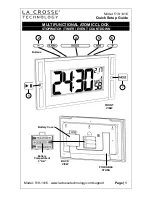
50
Utility Software
7.16
Security Screen
You can access three functions from the Security screen: Security levels, Password control and
Spoofing. Figure 7.19 illustrates the security screen. Under Security you can set up to control
specific access points. There are six levels of security (0, 1, . . . , 5) that provide various levels of
operation from the front panel keyboard and display, and restrict the RS232 ports access. Note that
the Front Panel and COM Port values change automatically with changes to
Device Security Level
.
Under Passwords you can assign and manage both user (operator) and administrator passwords.
Spoofing allows you to control the level for anti-spoofing function in the clock.
Figure 7.19: Security Configuration Screen
In the application window select the Security tab to view all of the spoofing related information.
Note that for spoofing detection to be active the clock must be in the normal mode.
Spoofing
Spoofing status currently comprises four measured values: (1) position change, (2) time messaging
offset, (3) fine time deviation, and (4) fine time rate deviation. Each value can be measured and
presented with a number from 0 to 100 and a combined value of 0 to 400. A value of zero is as
good as it gets and a value of 100 for each measured value would indicate virtually positive proof
of spoofing. If all four values were 100, then the combined total would equal 400.
Spoof Enable and Threshold
For anti-spoofing to work in the clock, the Enable Detection checkbox must be checked. Otherwise,
spoofed GNSS signals will be ignored in the clock. Uncheck the box if you want to turn off the anti-
spoofing feature. Testing has shown that the default Spoof Threshold Limit of 75 is an optimum
















































